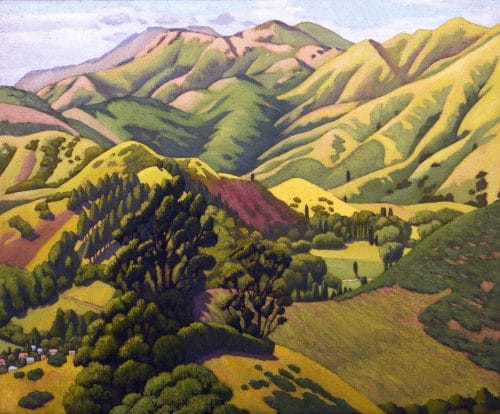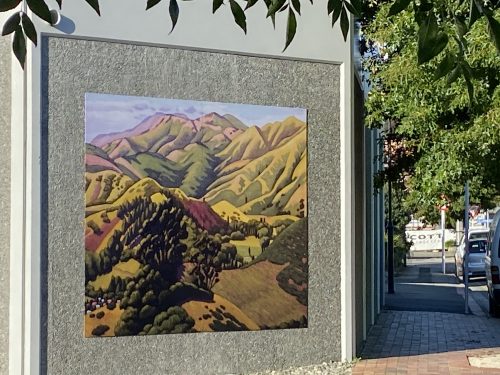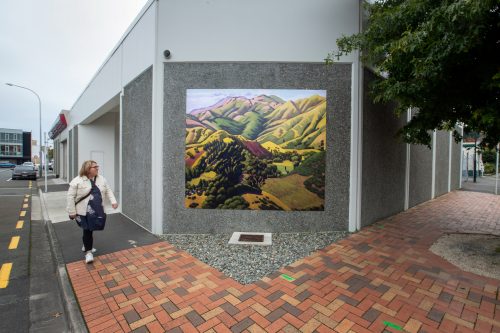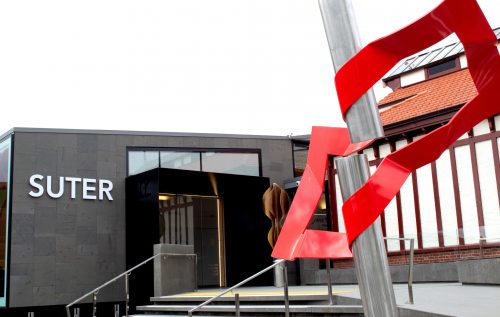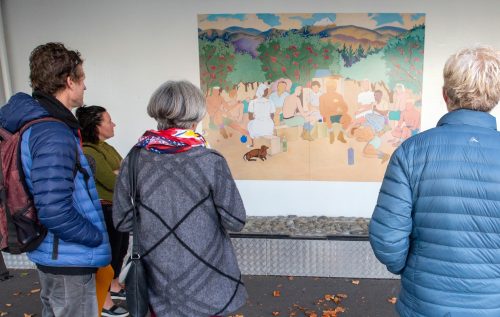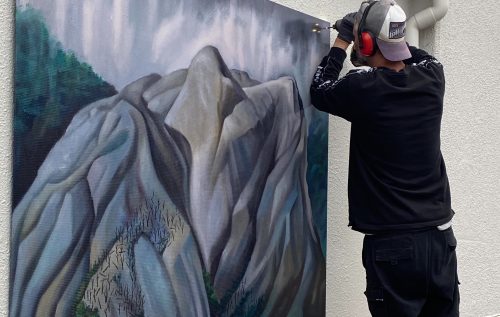W H Allen
Allen had a strong influence on New Zealand artists who became linked with Modernism, amongst them Toss Woollaston, Colin McCahon and Doris Lusk. These younger artists were all to become members of the Christchurch Group (see below). The donor of this painting, Francis Shurrock, was a sculptor based in Christchurch whom Allen met in 1926. They became life-long friends and with a number of other artists including Leo Bensemann and his wife, shared a passion for folk-dancing.
William Henry Allen (1894-1988) was one of a group of British art teachers recruited in the 1920s by William Sanderson La Trobe, the nation’s Superintendent of Technical Education, whose intention it was to improve the quality of art education in New Zealand. Allen had attended London’s Royal College of Art from 1919 to 1923. His contemporaries there included Henry Moore and Barbara Hepworth. Fellow students Roland Hopkins, Jenny Campbell and Robert Nettleton Field also immigrated to New Zealand and became lifelong friends. The contribution of the La Trobe artists, particularly Allen and Field had an on-going and profound effect on the development of New Zealand art, referred to as the “La Trobe effect”. Their teaching of early modernism opened the door to an avant-garde post-impressionist period in New Zealand’s art history. They influenced artists including Toss Woollaston, Colin McCahon and Doris Lusk who embraced these new ideas, attitudes and techniques. Allen and his fellow La Trobe teachers produced landscapes and portraits in a style that was at first deeply unacceptable to painters and art societies in New Zealand – still entrenched in their Victorian style of art.
Allen was appointed art master at Nelson College in 1933, became president of the Nelson Suter Art Society from 1941 to 1946 and concurrently served as a trustee of the Bishop Suter Art Gallery. He taught Workers Education Association (WEA) classes and participated in Canterbury Summer Schools that attracted Doris Lusk and Leo Bensemann to Nelson.
Following the family’s return to England in 1946, Allen taught at South West Essex School of Art, London, retiring in 1961. In 2008 a significant collection of Allen’s work was repatriated from the UK and gifted to Dunedin’s Hocken Library. The Tui Rata Frowd bequest contains about 80 artworks including oil paintings and works on paper, as well as a large collection of letters, correspondence, photographs, catalogues and articles. In 2015 the Hocken Library held a major exhibition, W H Allen & The La Trobe Effect. This exhibition shone a light on W H Allen’s contribution to the emergence of early regionalism in New Zealand. There’s an article about the exhibition here, which was attended by Allen’s daughter, Sheila Allen.
The Group
The Group was an informal but influential art association formed in Christchurch, New Zealand in 1927. Initially begun by ex-students from Canterbury College of Art, its aim was to provide a freer, more experimental alternative to the academic salon painting exhibitions of the Canterbury Society of Arts. The Group exhibited annually for 50 years, from 1927 to 1977, and it was continuously at the forefront of New Zealand art’s avant-garde scene.
Many of the country’s best-known artists were associated at some time with The Group. Among these are Colin McCahon, Doris Lusk, Toss Woollaston, Rita Angus, Leo Bensemann, Philip Trusttum, and Douglas MacDiarmid. The influence of The Group was such that it is occasionally referred to as ‘Bloomsbury South’.
